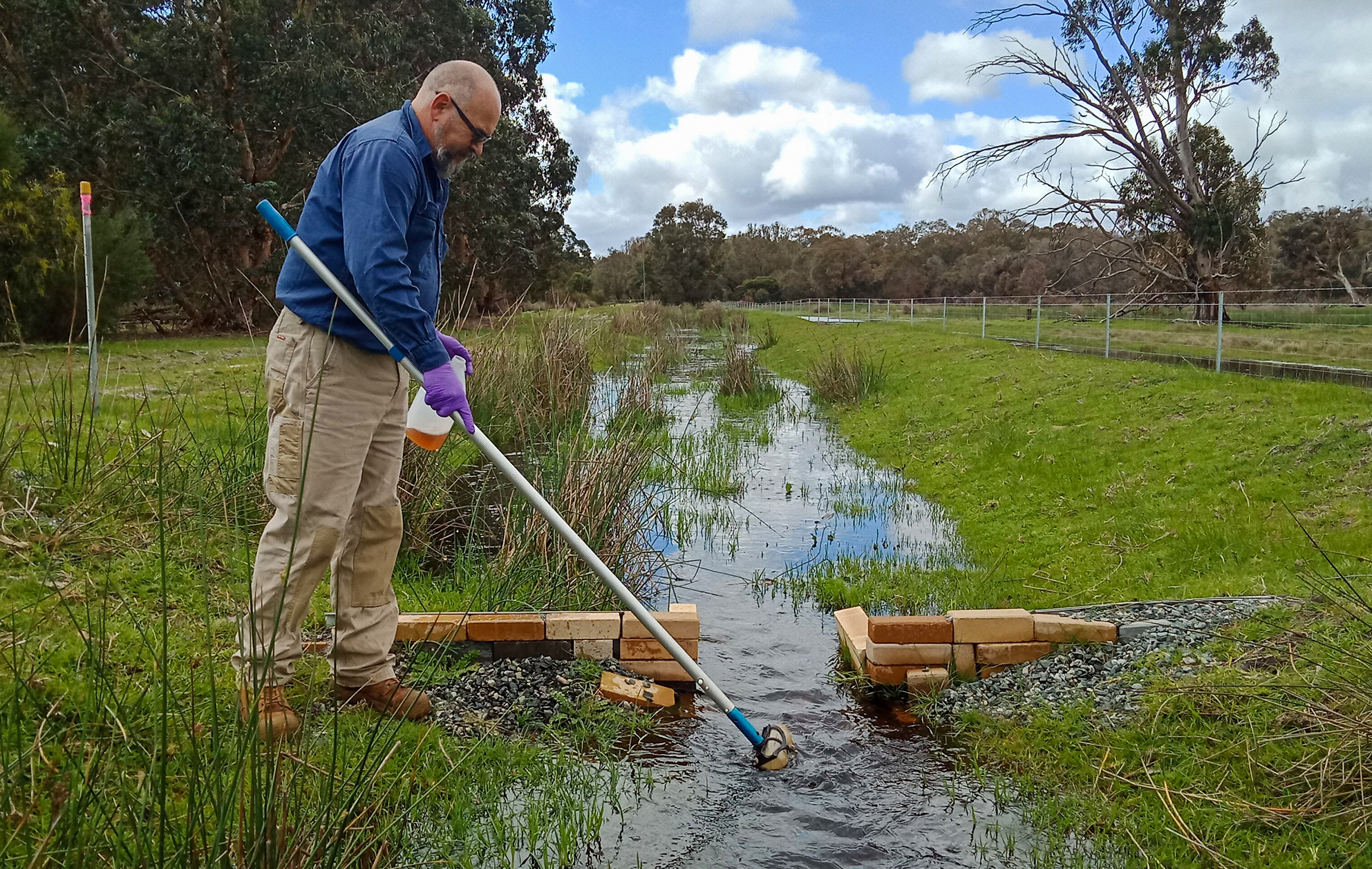Drain treatment trials
Through the Regional Estuaries Initiative, IMG is being trialled as a treatment to trap phosphorus in drains that contain high concentrations of nutrients washing into our estuaries. This work will be built on through Healthy Estuaries WA.
Compared with paddock and sporting ground trials, where the aim is to prevent phosphorus leaving agricultural land, drain trials focus on removing nutrients that have already entered waterways. The principle in this approach is to use IMG to capture and store nutrients in the base of the drains.

Trial design and results
Under the Regional Estuaries Initiative, nine trials were set up in Gull Road drain in the Peel-Harvey catchment. These investigated blending bed sands with 5-10 per cent IMG placed in six different configurations to find the best way to make drain water interact with the materials. Drain water is monitored upstream and downstream of the trial sites during winter, combined with sampling the sand beds over summer to assess benefits and risks.
Initial results highlight that removing phosphorus from flowing waters is challenging, with the rate of treatment often being very slow. Phosphorus is best trapped where IMG amendments are targeted in parts of drains where high phosphorus concentrations seep in with groundwater. These could trap up to 1 kg of phosphorus per year for every 100 m of amended drain bed. Much less phosphorus is trapped from water flowing over sand beds, or where IMG-amended sand is placed in bags or riffles. Monitoring has also found that IMG can be washed from sand beds if these are in too shallow or in high flow zones.
Results from drain trials are expected in late 2020.
